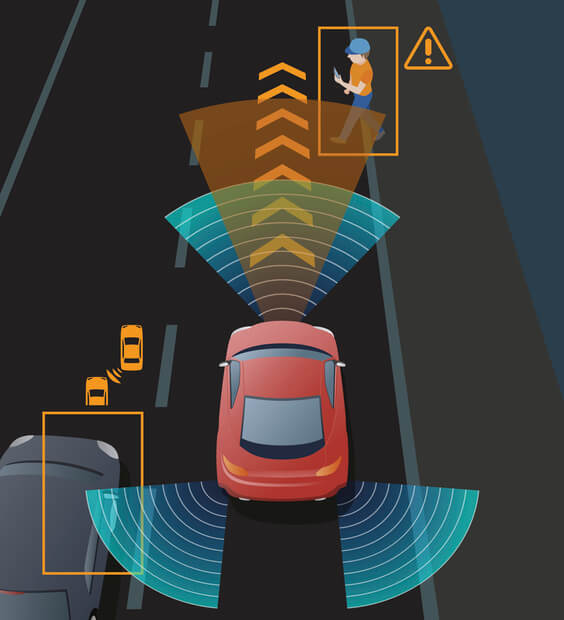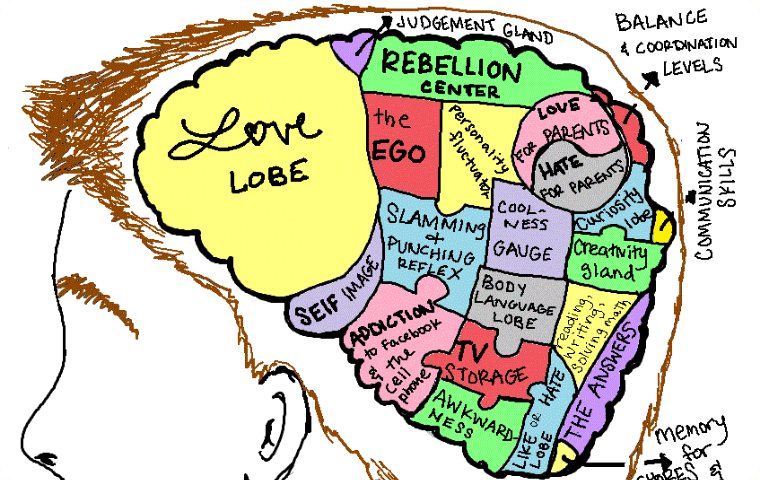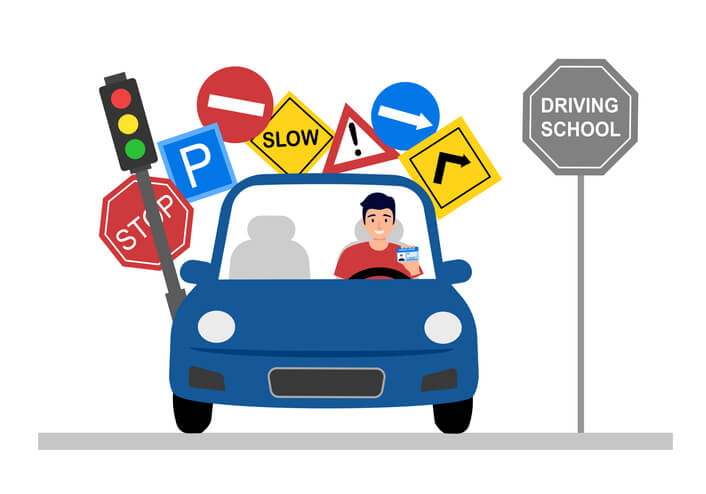If you're learning to drive, there's no doubt you've heard the term "blind spot," but what does it mean? And no, I'm not talking about the kind of blind spot I have in my heart for cheese that comes from a can. I know it's terrible for me, but I'll never give up my fake cheese!
Anyway, blind spots are a big deal when it comes to driving. Let's look at how to find the blind spots in your vehicle, recognize when you are at risk of being in another driver's blind spot, and some strategies to make sure you can see, and be seen, at all times.
What are blind spots?
A blind spot is any area around your vehicle that you cannot see without moving. Imagine what you see sitting behind the wheel. You can see out in front of you through the windshield. You can see to the sides by glancing through windows to your left and right, directly behind you through your rearview mirror, and to the sides behind you through your side mirrors.
Now, imagine what you can’t see. Anything that you cannot see around your vehicle without moving your head or body is a blind spot. Is a headrest, pillar at the edge of your windshield or window, passenger, or anything else obstructing your vision of something outside your vehicle? That is a blind spot.
It’s critically important to know your vehicle’s blind spots before hitting the road. What might seem like a small blind spot could prevent you from seeing an obstacle, pedestrian, cyclist, or another vehicle.
How to overcome blind spots
Once you have identified where the blind spots in your vehicle are, there are a few things you’ll want to keep in mind to deal with them. Your first line of defense is your adjustable rearview and side mirrors. You should adjust these to maximize the visibility of the areas behind and around your vehicle. Though every vehicle is different, here are some good general rules to follow when adjusting your mirrors:
- Your rearview mirror should be centered on your rear window. Don’t forget about the nighttime adjustment available to reduce headlight glare!
- Your side mirrors should be adjusted to barely see the edge of your vehicle all the way to the rear. This position will allow maximum visibility of what’s to the side and behind you.
Take note of what you can and cannot see through your mirrors without turning your head or body, and remember to adjust your seat to the position you like before finding the sweet spot for your mirrors.
Any area around your vehicle that you cannot see without moving means a zone you will have to check when performing traffic maneuvers. This situation can be particularly nerve-wracking for new drivers as you will have to take your eyes off the road in front of you and manually turn your head and torso to check your blind spots not covered by your mirrors.
You’ll need to perform these checks anytime you interact with an area in a blind spot, which can be a lot of situations. These include circumstances like:
- Changing lanes
- Exiting your vehicle
- While reversing
- When turning
- While merging into traffic
These are just a few of the situations that require you to check your blind spot, but you’ll get the feel of when you need to do so as you gain more driving experience.
Mind the Spot
Just as important as being aware of the blind spots on your vehicle is being mindful when you might be in the blind spot of another vehicle. A massive component of defensive driving is being aware of your surroundings and what other drivers may or may not do. The “S” in the S.P.I.D.E.R.Method™, stands for “Scan.” A critical thing to be scanning for are situations where you might find yourself in another vehicle’s blind spot.
Blind spot awareness is vital during highway driving situations. You do not want to travel in another vehicle’s blind spot any longer than you must, so be prepared to speed up and move out of it, or slow down and allow more distance between you and the other vehicle.
It’s also important to remember that large commercial vehicles can have significantly larger blind spots than yours, so be extra careful when driving near them. Remember the general rule that if you cannot see a truck driver in their mirrors, they cannot see you either.
Gaining enough experience to overcome blind spots is one of the more intimidating parts of learning to drive. It feels unnatural and maybe a little frightening to take your eyes off the road ahead, but it’ll start to feel like second nature before you know it with some patience, awareness, and practice.
Liam Hoch researches and writes about safe driving for DriverZ.
Having been a passenger in multiple near-catastrophic vehicle collisions, Liam knows first-hand the dangers of distracted, reckless, and unsafe driving.
Passionate about our core principles of helping to make safer drivers and, ultimately, saving lives, Liam stays at the forefront of driving safety innovation and research.

















